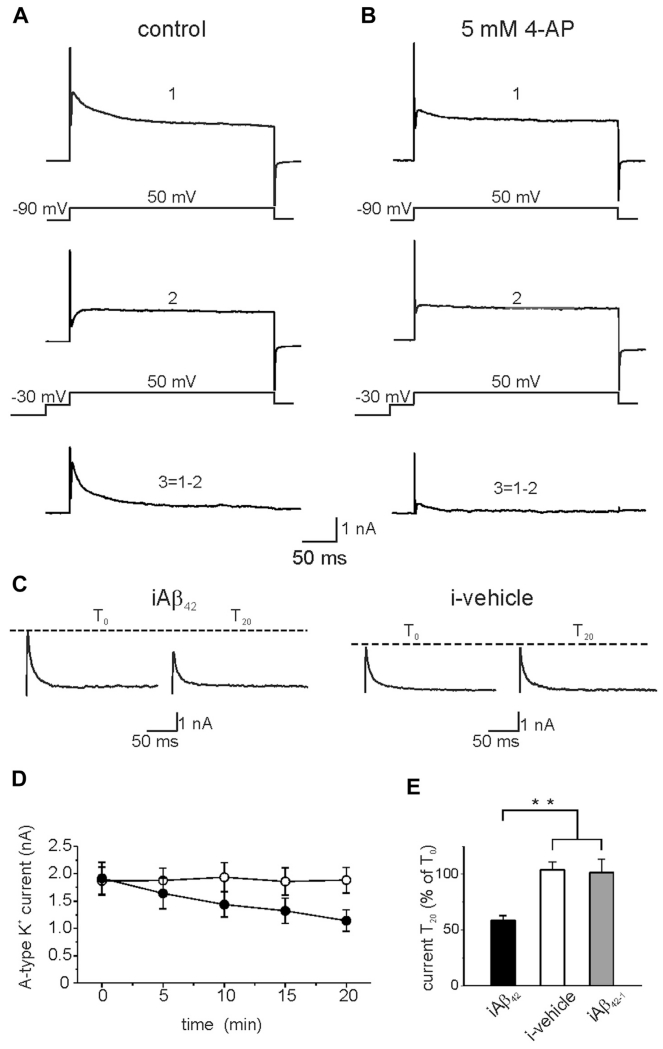Fig. 2.
Intracellular Aβ42 reduces transient A-type K+ currents in primary hippocampal neurons. (A) Isolation of the transient A-type K+ current from a hippocampal neuron in the voltage-clamp configuration. The total outward current (upper trace; 1) was recorded during 300 ms voltage steps from −90 to +50 mV. To inactivate the transient K+ channel a prepulse to −30 mV (50 ms) was applied before the voltage step to +50 mV (middle trace; 2). The transient K+ current (lower trace; 3) was isolated by digital subtraction of the sustained current from the total outward current. (B) K+ current recorded in the presence of 5 mM of 4-APs, an A-type K+ current blocker (from the same neuron shown in A). (C) Representative traces showing the effect of 20 minutes intracellular application of Aβ42 (left) or vehicle (right). (D) Time course of the transient A-type K+ current amplitudes during intracellular perfusion of Aβ42 (black circles; n = 10) and vehicle (open circles; n = 10). (E) Bar graph summarizing data from experiments shown in C (average transient A-type K+ current at T20 is expressed as percentage of transient A-type K+ current recorded at T0; iAβ42 n = 11; i-vehicle n = 10; iAβ42-1 n = 6; ** p < 0.001). Abbreviations: Aβ, amyloid β-protein; APs, action potentials.

